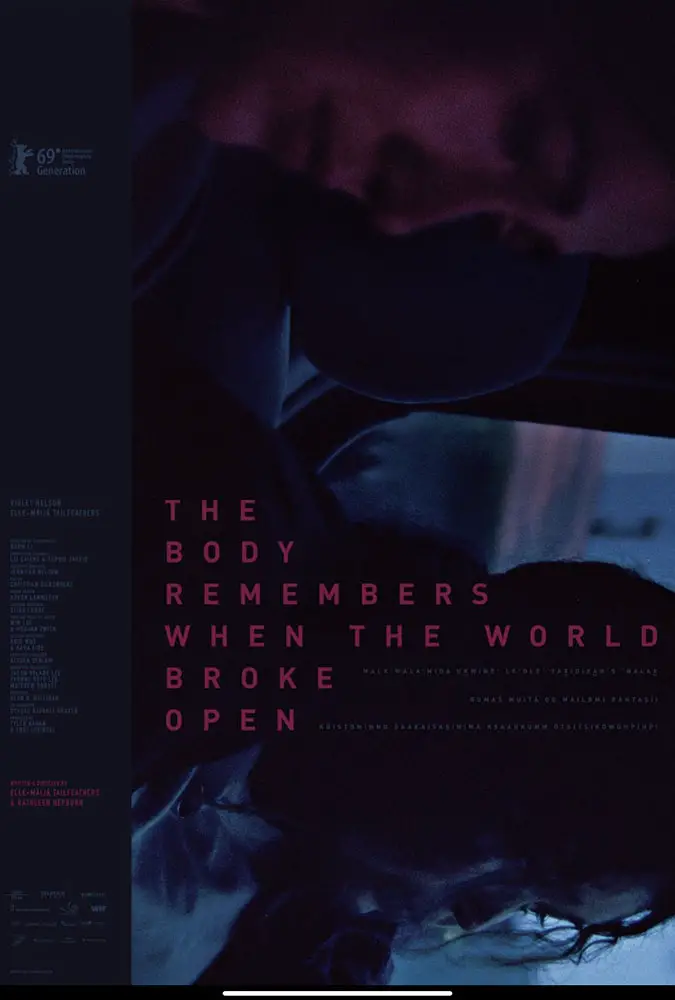
The two protagonists have equal share of the spotlight but the parts focused on Aila (and her stylishly curated flat), with slow and artistically blurred scenes akin to a European art-house film, could remind one of films like Joanna Hogg’s The Souvenir—also about domestic violence and abuse, but very “white privileged emotional journey”—which can be a good or a very bad thing. Add to that the fact it might sometimes feel like Aila, who reacts differently to the stress of the situation by being the one doing all the talking, is taking over the narrative, or that it is “her story” about her encounter with Rosie. But the filmmakers made sure Rosie had some agency. The mum-to-be might be lost, but is not the prop of her story, or here simply to give Aila a purpose as a “white savior.”
The film is also commendable for not shying away from trauma and yet not sensationalizing it. For example, we can see the marks on Rosie’s body, but they are “revealed,” and we never see the physical violence. Violet Nelson was very convincing in playing this difficult role even though it is only her screen debut. She was discovered at only 16-year-old after a comprehensive search for an indigenous girl via a school video. It might have helped that this story means a lot to her as she is aware of this sort of problem in her community and saw first hand its destructive effect.
“…a genuine social realist film and the fact that is shot in real-time only heightens the sense of reality.”
Visually the film consists of mainly very tight, narrow, and close-up shots, so we never get to see the bigger picture, and it can feel a bit claustrophobic. But it is a stylistic exercise “au naturel” that puts viewers there with the characters and gives the film authentic documentary-like qualities. Like a theatre production, the film was rehearsed with all the performers for weeks but was only shot five times in its entirety. It was also shot on 16mm to give a unique texture, but that meant they could only shoot so much on one roll. Hence, the team had to choreographed everything with two cameras that could succeed each other at all times smoothly. They then stitched everything together in editing, so it looks like a seamless one take. It was a truly independent filmmaking and cinematic journey involving not only the cast and crew, but, members of the community. The film was workshopped with First Nation women who gave valuable insights to the story and situations, and the directors also insisted on taking student interns from First Nations background in each department from costume to production.
The Body Remembers When the World Broke Open is based on a real occurrence, as Tailfeathers once met a woman like Rosie at that corner, and nobody was helping. Everybody turned a blind eye because it is a depressingly common occurrence, and she was, indeed, regrettably just “another one”; another desperate casualty of the broken system. The feature can be seen, at first, as yet another essential and thoroughly depressing project. Still, after seeing the full picture, one will realize that while it is a raw indie film, it is also quite poetic. Think about its title and how it suggests the devastating magnitude of the daily struggles of people trying to break vicious circles. The Body Remembers When the World Broke Open definitely has a great story to tell about the harsh realities of indigenous women, or simply women everywhere in the world, while incorporating many heavy themes (from homelessness, domestic abuse, Indigenous issues, substance abuse, teen pregnancy, access to proper health care or social services). It is a passionate plight to listen to their stories, and a praiseworthy viewing experience coming a tad too short of greatness.
The Body Remembers When the World Broke Open screened at the 2019 AFI Fest.
QUOTES:
“The Body Remembers When the World Broke Open is actually based on a real occurrence as Tailfeathers once met a woman like Rosie at that corner and nobody was helping.
“ … She takes a bus to go home but when she gets off, she finds a distraught and shocked Rosie standing barefoot under the pouring rain. . ”
“One can see The Body Remembers When the World Broke Open as
“The Body Remembers When the World Broke Open is a genuine social realist film and the fact that is shot in real-time only heightens the sense of reality. ”
“The Body Remembers When the World Broke Open definitely has a great story to tell about the harsh realities of indigenous women, or simply women everywhere in the world.”

"…a great story to tell about the harsh realities of indigenous women, or simply women everywhere in the world."




